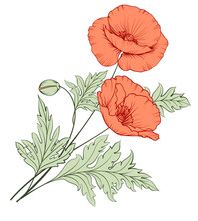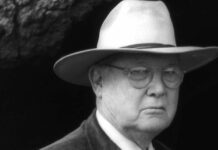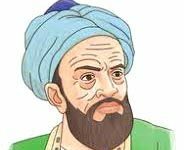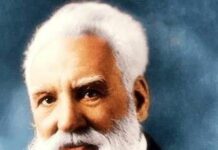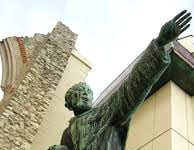“Learn about Sarbananda Singh, the founder king of the Bengmara Kingdom, his role in the Mowamariya Rebellion, and his efforts in public welfare. Discover how his leadership shaped the Matak Kingdom and led to the founding of Tinsukia.”
Sarbananda Singh-Brief Life Sketch
Sarbananda Singh was a revolutionary leader, organizer and the founder king of Bengmara Kingdom (Matak Kingdom) on the Northeast side of Assam. His father’s name was Marutnandan and his mother’s name was Patay. Sarbananda, the only child of the parents, lost his mother in his infancy. Marutnandan, a very ordinary peasant, was a man of Matak Buruk Chutiya clan. Sarbananda’s original name was ‘Mejera’. Marutnandan carried the motherless Mejera with him all the time wherever he went. Once Maruthanandan was digging a pond taking Mejera on his back and in the mean time, the king saw him and relieved him from work.
Mejera was a very religious person. He took refuge with the Mayamara guru Ashtabhuja Gohain. It was a tradition in Mayamara Vaishnavism to give a name to a newly admitted disciple. That is why Mejera was given the name of ‘Sarbananda’ by Ashtabhuja Gohain. The revolting Marans were subjected to royal persecution. The leaders of the rebellion could not be traced and the innocent civilians were imprisoned by the Ahom monarch. It was during this time that Sarbananda led the Mowamariya rebellion. Sarbananda had praiseworthy organizational skills. He boosted the morale of all the people inside and outside the prison. During the Mowamariya Rebellion, Sarbananda proclaimed himself to be the king of Bengmara. Sarbananda Singh was the first king to establish his capital at Rangagarh in 1788, about 10 km northward from the present-day Tinichukiya and in 1791 the capital was shifted to Bengmara, the present-day Tinichukiya. King Sarbananda Singh preserved the Thai tradition and took the title of ‘Swargadeo’. He introduced gold and silver coins in his name.
Sarbananda Singh undertook various public welfare works for the betterment of the Matak kingdom. He improved the transportation system by building many roads. He built Rangagarh Ali, Godha Ali, Rajgarh Ali, Hatiali etc. A total of 24 ponds were dug inside and outside the capital for the welfare of the people. These include Benmara Pond, Triangular Pond, Devi Pond, Shelukia Pond, Bar Pond, Chauldhova Pond, Godha Pond etc. After the name of the triangular pond dug by Sarbananda, the name of Bengmara town was later changed to Tinsukia.
It is known that the people lived in peace and harmony during the reign of Sarbananda Singh. The state was replete with food grains. Necessary weapons were manufactured in his own state. Sarbananda Singh was a very far-sighted and prudent king. He became popular among his subjects by means of his welfare works.
Sarbananda Singh died in 1805. After his death, his eldest son Matibar became the king of the Matak kingdom. 0 0 0
Sarbananda Singh-FAQs
Frequently Asked Questions and Answers on Sarbananda Singh
Q1: Who was Sarbananda Singh?
A1: Sarbananda Singh was a revolutionary leader, organizer, and the founder king of the Bengmara Kingdom (Matak Kingdom) in the northeastern part of Assam. He played a crucial role in leading the Mowamariya Rebellion and establishing the kingdom, where he took the title ‘Swargadeo.’
Q2: What was S Singh’s original name, and how did he come to be known as Sarbananda?
A2: S Singh’s original name was Mejera. He was given the name ‘Sarbananda’ by the Mayamara guru Ashtabhuja Gohain when he took refuge and became a disciple in the Mayamara Vaishnavism tradition.
Q3: What significant role did S Singh play in the Mowamariya Rebellion?
A3: Singh led the Mowamariya Rebellion against the Ahom monarchy, organizing and boosting the morale of the people. He proclaimed himself as the king of Bengmara during the rebellion and established the Matak Kingdom.
Q4: When and where did S Singh establish his capital?
A4: Sarbananda Singh established his first capital at Rangagarh in 1788, about 10 km north of present-day Tinichukiya. In 1791, he shifted the capital to Bengmara, which is now known as Tinsukia.
Q5: What public welfare works did S Singh undertake during his reign?
A5: Sarbananda Singh undertook various public welfare works, including improving the transportation system by building several roads like Rangagarh Ali, Godha Ali, Rajgarh Ali, and Hatiali. He also dug 24 ponds, including Benmara Pond, Triangular Pond, and Godha Pond, to ensure water supply for the people.
Q6: How did Tinsukia get its name?
A6: The town of Tinsukia was originally known as Bengmara. It was later renamed Tinsukia after the Triangular Pond (Tinsukia Pond) dug by Sarbananda Singh.
Q7: What was the state of the Matak kingdom during Sarbananda Singh’s reign?
A7: During Singh’s reign, the Matak kingdom was peaceful and prosperous. The state had an abundance of food grains, and necessary weapons were manufactured within the kingdom. Sarbananda Singh was a farsighted and prudent king, earning popularity among his subjects through his welfare works.
Q8: When did Sarbananda Singh die, and who succeeded him?
A8: Singh died in 1805. After his death, his eldest son, Matibar, became the king of the Matak kingdom. 0 0 0
N.B. The article ‘Sarbananda Singh-Brief Life Sketch’ originally belongs to the book ‘Introduction to World Personalities‘ by Menonim Menonimus.
Books of Composition by M. Menonimus:
- Advertisement Writing
- Amplification Writing
- Note Making
- Paragraph Writing
- Notice Writing
- Passage Comprehension
- The Art of Poster Writing
- The Art of Letter Writing
- Report Writing
- Story Writing
- Substance Writing
- School Essays Part-I
- School Essays Part-II
- School English Grammar Part-I
- School English Grammar Part-II..
Books of S. Story by M. Menonimus:
Books of Biography by M. Menonimus:
- The World Writers-Brief Biographies
- Introduction to World Writers
- Introduction to World Personalities
- Love of Reputed Persons ..
Related Search:
- Lives of Poets
- Writers’ Lives
- Top Hundred Writers
- Best Writers of All Time
- Most Eminent English Poets

